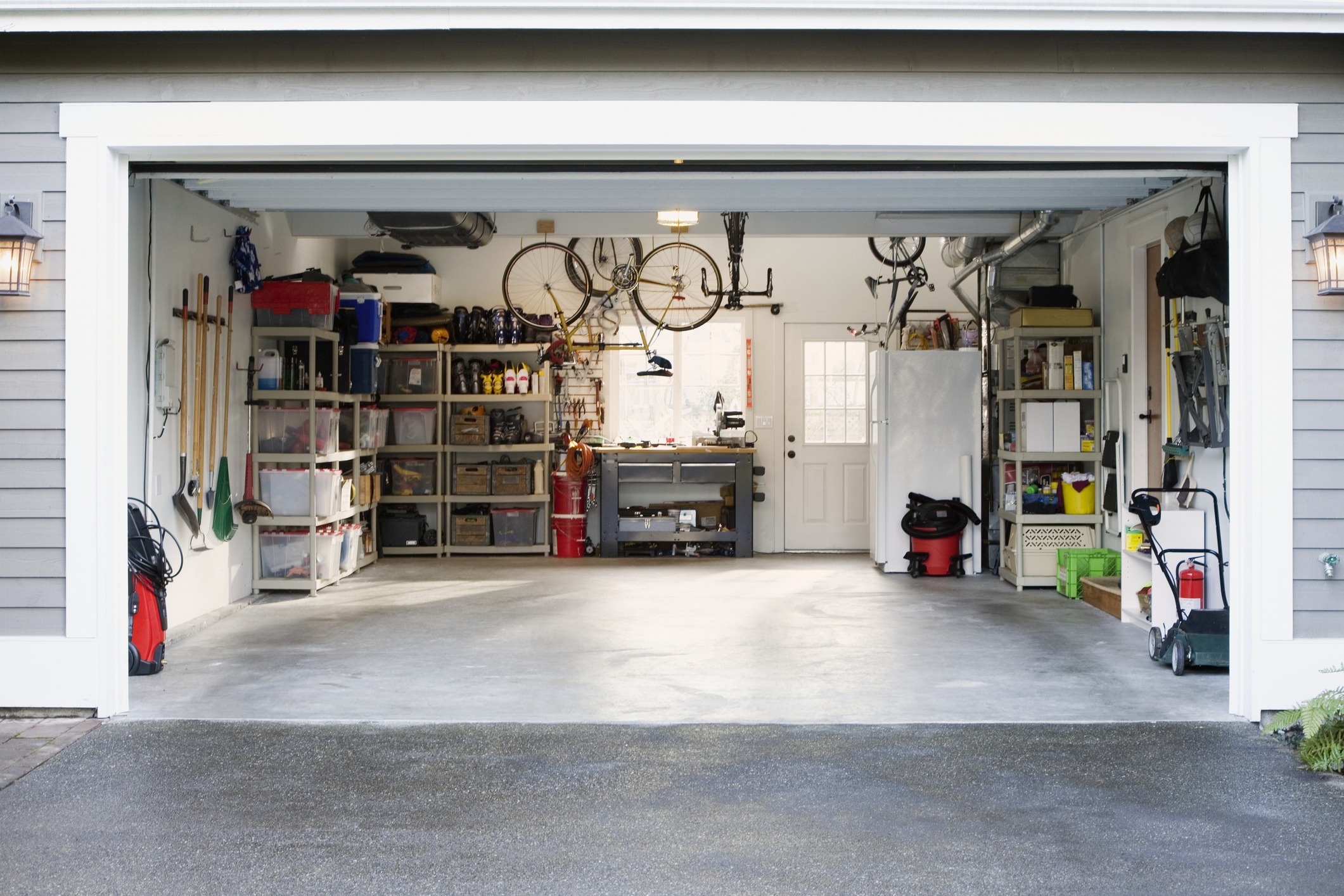

Wondering how to paint a garage floor? Garage floors can wind up looking grimy and stained, but even if there’s oil or grease on yours, it’s possible to revive it with paint. What’s more, you can give it a finish that resist stains so it stays in better shape from now on.
Painting a garage floor is a job you can easily do yourself so you won’t need to call in a contractor. You can paint a bare concrete floor, but it’s also possible to give a new lease of life to a previously painted floor, and we’ve got all you need to know whichever applies to your garage. As with all painting jobs, good preparation is key to success, and we’ve got the lowdown on that, too.
If you want to find out how to paint your garage floor, just scroll down for our step-by-step guide. Thinking of turning your garage into part of your home instead? Check out our garage conversion ideas for inspiration.
1. Measure the floor
You’ll need to know the area of the garage floor before you start so you can set yourself up with the correct quantity of paint. Measure the floor’s length and width to calculate the area, and check the instructions on the tin for the coverage rate of your chosen paint. Bear in mind that you’ll need to use two or even three coats of paint.
Asking what kind of paint you use on a concrete garage floor? You can choose between epoxy, acrylic and latex garage floor paints. Latex and acrylics are easiest to apply and will likely cost less. Epoxy should prove more durable, however, and can be worth the extra expense entailed in opting for it.
Going to be sprucing up the door as well? This is how to paint a garage door.
2. Prepare a new concrete garage floor for painting
If the concrete of your garage floor is newly laid, be aware that it needs to set for at least a month before painting.
Sweep the floor clean of any dust and debris, and use a wire brush to get rid of any remaining material.
If the concrete is very smooth, you may need to roughen the surface to prepare it for painting, depending on the paint you are using. You can use a specialist etching product; follow the instructions on the label.
Apply a primer compatible with the floor and your chosen paint. Make sure you work towards the door so you don’t trap yourself in a corner.
3. Prepare a previously laid concrete garage floor
Clean the floor of debris using a stiff broom.
A garage floor that’s been down for a while is likely to have accumulated oil and grease stains that need to be cleaned off before you start. Use a specialist concrete cleaner to do the job, following the product instructions. If there are any rust stains, a rust removal product can be used. You may need to equip yourself with a best pressure washer if the stains are well established. Make sure you allow the floor to dry completely afterwards.
If there are any cracks in the floor, use a wire brush to clean them out, then use a concrete filler. Sand lightly once dry.
Apply a primer that’s compatible with your floor and the paint you are going to be using. Work towards the door.
4. Prepare a previously painted garage floor
For floors that have been painted in the past, clean with a wire brush to remove paint flakes. Sand down and sweep clean.
You can then proceed to fill any cracks as above. If there are any oil and grease stains on the floor, these should be cleaned off, following the step above.
5. Apply paint to the garage floor
Once the floor is prepared and thoroughly dry, you can start to apply paint. Before you start open all the doors and any windows to provide good ventilation.
Prepare the paint according to the instructions on the tin. Be aware of the manufacturer’s instructions on what the temperature range needs to be for successful application.
If you are using a two part epoxy paint, it’s particularly crucial to read all the instructions for using the paint before you start as there is a window of time for using the paint once mixed.
Applying the first coat of paint with a brush is a thorough way of coating the floor initially, but you might prefer to use a roller for subsequent coats.
Remember to begin at the far end of the garage and work towards the door, concentrating on sections at a time.
Allow the first coat of paint to dry following the instructions on the tin.
Use a roller or paintbrush to apply a second coat and, if necessary – for example on heavily textured concrete – a third, allowing the paint to dry thoroughly between coats.
6. Leave garage floor paint to cure
It’s important to follow the paint manufacturer’s instructions and leave the paint to fully cure before you park a car on it or move furniture and equipment back into the garage.
Join our newsletter
Get small space home decor ideas, celeb inspiration, DIY tips and more, straight to your inbox!

Sarah is a freelance journalist and editor writing for websites, national newspapers, and magazines. She’s spent most of her journalistic career specialising in homes – long enough to see fridges become smart, decorating fashions embrace both minimalism and maximalism, and interiors that blur the indoor/outdoor link become a must-have. She loves testing the latest home appliances, revealing the trends in furnishings and fittings for every room, and investigating the benefits, costs and practicalities of home improvement. It's no big surprise that she likes to put what she writes about into practice, and is a serial house revamper. For Realhomes.com, Sarah reviews coffee machines and vacuum cleaners, taking them through their paces at home to give us an honest, real life review and comparison of every model.
-
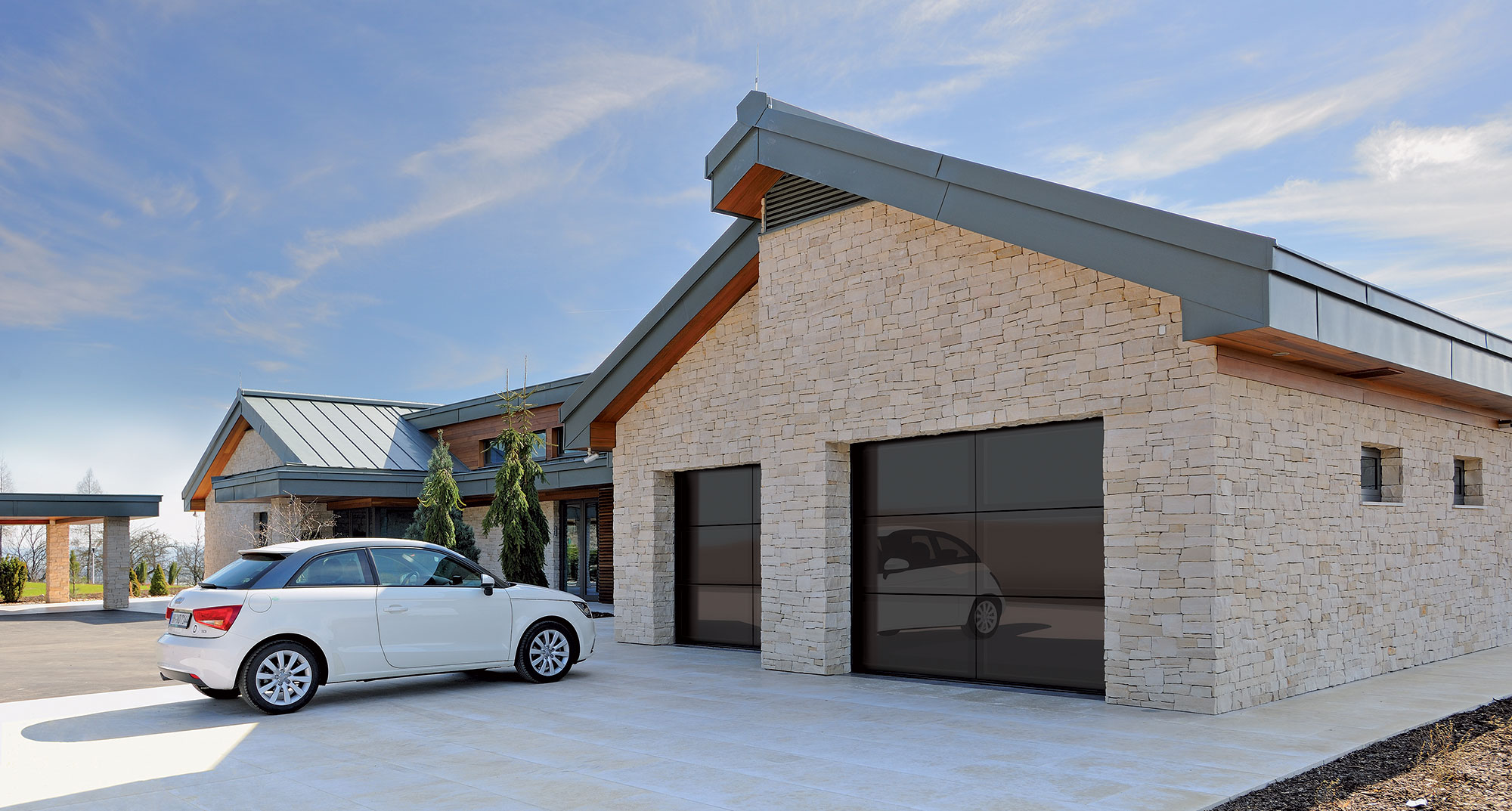 How much does a garage door replacement cost in 2022?
How much does a garage door replacement cost in 2022?Get clued up on how much a garage door replacement costs and bump up your curb appeal in 2022.
By Carol J. Alexander
-
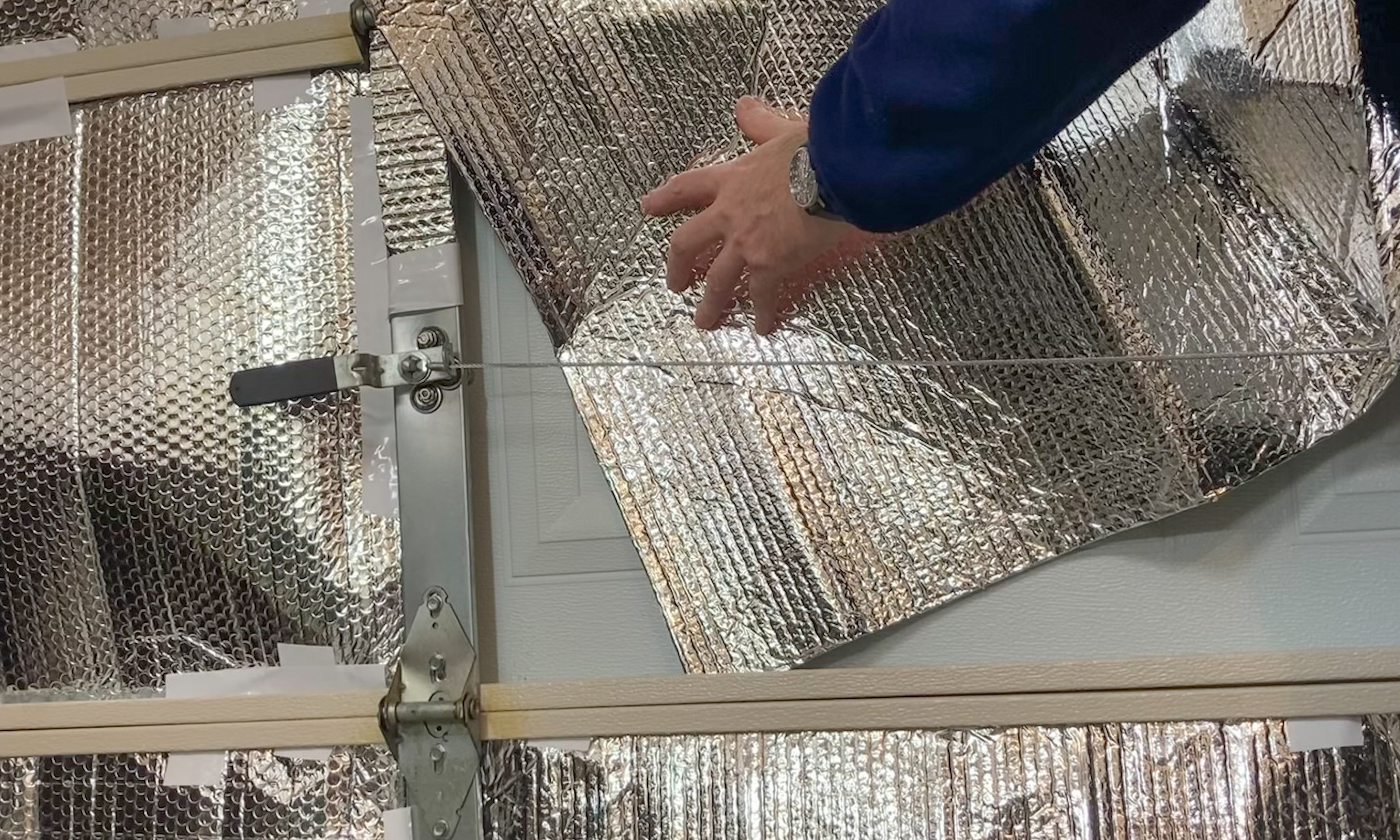 Garage insulation – different ways to insulate garage doors, walls and floors
Garage insulation – different ways to insulate garage doors, walls and floorsIf you're pondering garage insulation, we've laid out all the benefits of insulating garage doors, walls and floors, as well as the different options for doing so
By Sarah Warwick
-
 What to consider before building a garage addition: Experts weigh in
What to consider before building a garage addition: Experts weigh inFrom costs, to permits, to purpose, here's what you'll need to consider before you plan a garage addition, according to experts
By Terri Williams
-
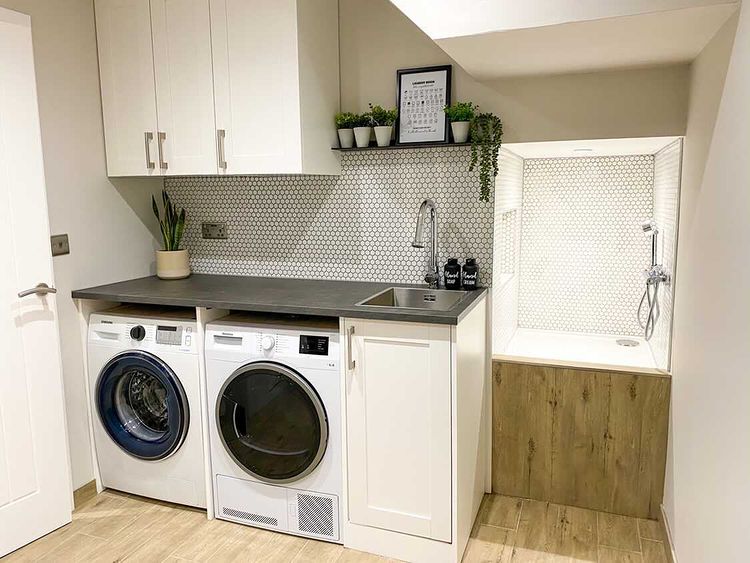 This garage dog shower is perfect for cleaning mucky pups (and stylish, too!)
This garage dog shower is perfect for cleaning mucky pups (and stylish, too!)Dog lover? See how one homeowner created a doggy spa in the former garage to pamper her pooches
By Alison Jones
-
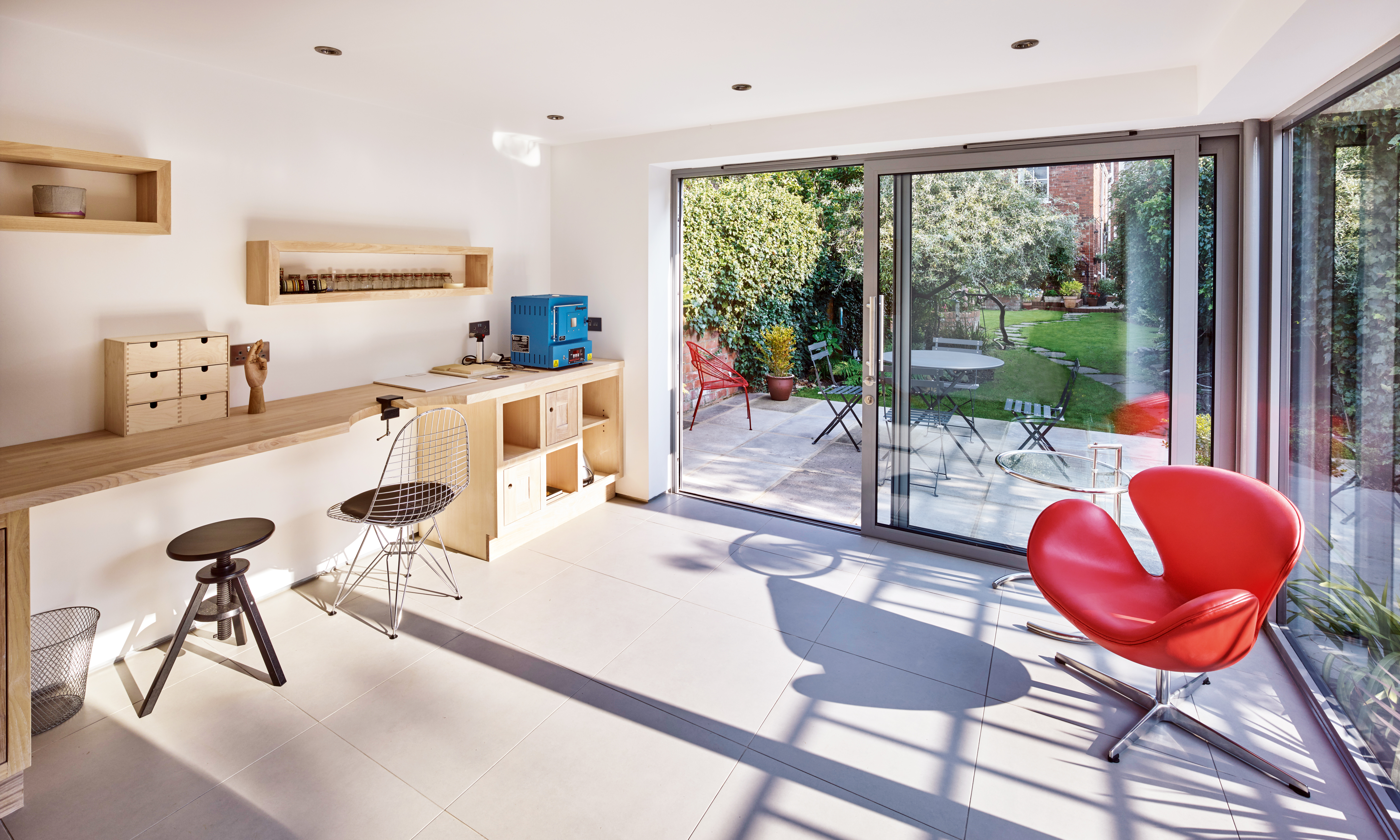 Garage conversion ideas: 21 ways to combine style and function
Garage conversion ideas: 21 ways to combine style and functionBe inspired by these practical garage conversion ideas and real-life projects that will enhance your space – achieve something special without the need to extend
By Sarah Warwick